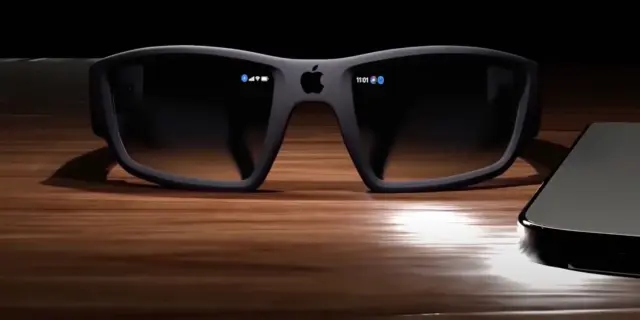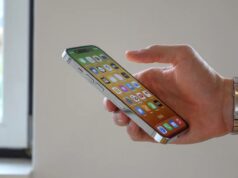
Apple is reportedly making serious progress toward launching its first smart glasses by late 2026. If true, this could mark the company’s official entry into the expanding world of wearable tech, bringing its own unique spin to a space that’s evolving quickly. From what’s been hinted, this new device will lean heavily on artificial intelligence (AI) and offer a noticeably different experience than Apple’s Vision Pro headset.
According to sources familiar with Apple’s plans, as reported by Bloomberg, the company is aiming for a late 2026 release. This suggests they want to avoid dragging the project into 2027, showing a pretty focused push to get these glasses in consumers’ hands sooner rather than later. It also signals that Apple remains committed to wearables, even as its Vision Pro headset is still finding its footing in the market.
A New Direction for Apple’s Wearables
Unlike the Vision Pro’s immersive mixed-reality setup, the upcoming smart glasses are expected to look and feel more like traditional eyewear. Reports say the design will be lighter and more comfortable for daily use. The style might resemble existing products like Meta’s Ray-Ban glasses, but naturally with Apple’s signature craftsmanship and user experience polish.
This seems like a deliberate shift toward a more approachable, everyday device. The Vision Pro, while impressive, is a high-end gadget with a hefty price tag and isn’t really designed for casual, all-day wear. These smart glasses, on the other hand, seem intended for a wider audience and for more consistent use throughout the day.
AI at the Forefront
One of the biggest selling points of the rumored Apple smart glasses will be their AI integration. They’re expected to pack cameras, microphones, and speakers, enabling Apple’s AI systems to “read” the wearer’s environment and respond accordingly. This fits a broader industry trend where AI is becoming embedded in devices to make interactions feel more natural and context-sensitive.
Some of the features people speculate about include:
- Photo and Video Capture: Possibly allowing users to discreetly snap photos or record videos.
- Audio Playback and Calls: Playing music and managing phone calls on the go.
- Navigation Help: Offering directions without needing to pull out your phone.
- Multimodal AI Interaction: With Siri likely playing a starring role, users could ask about objects around them or get live info based on what they’re seeing — maybe identifying landmarks, translating languages, or even providing product details in real time.
This AI focus suggests Apple wants the glasses to act as a subtle but powerful assistant, providing hands-free access to helpful info and tools that blend seamlessly into everyday life. It’s a vision of tech that’s less intrusive but still highly useful.
Custom Silicon and Manufacturing Push
To make all these features work efficiently, Apple is reportedly developing custom chips tailored specifically for the smart glasses. These processors are expected to be designed with power efficiency in mind—crucial for keeping the glasses lightweight and ensuring decent battery life. The chips will likely be based on Apple Watch system-on-a-chip (SoC) technology, known for its low power consumption.
On the manufacturing side, Apple is apparently ramping up production. Sources say the company plans to build “large quantities” of prototype glasses before the end of 2025. These units will be tested extensively before mass production, which hints that the project is moving beyond early concepts and into real development. It’s a clear sign Apple is serious about hitting that 2026 timeline.
Market Context and Competition
Apple isn’t the only big player aiming for smart glasses dominance. Meta, with its Ray-Ban smart glasses, has already carved out some ground offering features like photo capture and audio playback. Google has also revealed its Android XR platform for smart glasses and is partnering with hardware makers to bring similar devices to market.
Where Apple could really stand out is in design and user experience. The company’s tight hardware-software integration and its expansive ecosystem of devices and services might offer a more polished, seamless product. Plus, AirPods-level audio quality and deep iPhone connectivity could be big selling points that set Apple’s glasses apart from the competition.
True augmented reality (AR) glasses—think holographic displays and advanced spatial computing—are still several years away, according to industry experts. These high-end AR devices face big hurdles, like improving display tech, boosting chip performance, and miniaturizing batteries.
The rumored smart glasses for 2026 seem more like a practical step forward, using what’s possible now while laying groundwork for future innovations. Apple is known for long development cycles—after all, the Vision Pro reportedly took over a decade in the making. So, if these glasses really are coming in 2026, it suggests a more focused, streamlined approach centered around core AI-driven features.
If Apple’s smart glasses do arrive in late 2026, it could be a defining moment for wearable technology. With a blend of AI integration and a familiar glasses form factor, Apple looks set to deliver a device that’s both practical and deeply integrated into daily life. As we get closer to launch, we’ll likely hear more about design details, features, and pricing—giving us a clearer glimpse into Apple’s vision for this next-generation wearable.










